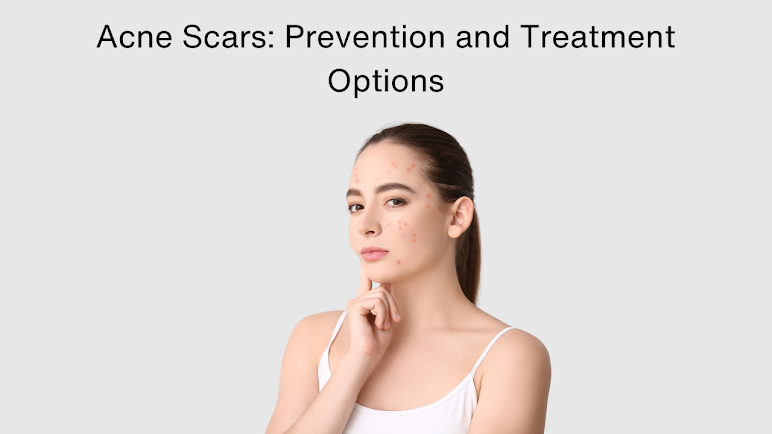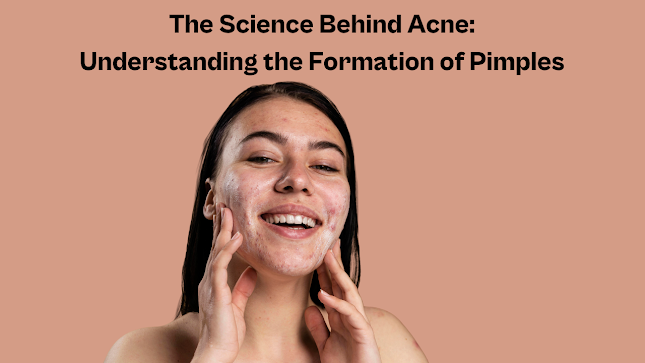Acne Scars: Prevention and Treatment Options

Welcome to the Gleuhr skin and dental clinic in Chandigarh and we provide best skin, hair and dental treatment in tricity and we also sell natural skin and hair products in all over world. We have best skin specialist in Chandigarh who are highly educated and dedicated to their work. https://clinic.gleuhr.com/

Acne, a common skin condition affecting millions worldwide, is often a source of frustration and self-consciousness. While it primarily manifests as pimples on the skin's surface, the underlying causes are rooted in complex biological processes. In this comprehensive exploration, we delve into the science behind acne, unraveling the mechanisms that lead to the formation of those pesky pimples.

To comprehend the science of acne, it's crucial to first understand the basic anatomy of the skin. The skin is the body's largest organ, consisting of three layers: the epidermis, dermis, and subcutaneous tissue. The epidermis is the outermost layer, acting as a protective barrier against external factors.
At the heart of acne formation lies the sebaceous glands, which are distributed throughout the skin. These glands produce an oily substance known as sebum, a key player in the development of acne. Sebum's primary function is to moisturize and protect the skin, but an overproduction or imbalance can lead to acne.
The skin's surface is dotted with tiny openings called pores, each housing a hair follicle. Sebum is secreted into these follicles, reaching the skin's surface through the pores. When the body produces excess sebum, combined with dead skin cells, the mixture can create a plug within the hair follicle, obstructing the pore.
In the oxygen-deprived environment of a blocked pore, a bacterium called Propionibacterium acnes thrives. P. acnes is a normal resident of the skin, but an overgrowth can trigger an inflammatory response, contributing to the development of acne. This bacterium feeds on sebum, producing inflammatory substances that lead to redness and swelling.
As P. acnes proliferates within blocked pores, the body's immune system responds to the bacterial invasion. Inflammation occurs as white blood cells are recruited to the affected area, resulting in the characteristic redness and swelling associated with acne lesions.
Acne lesions come in various forms, each representing a different stage in the development of pimples. Comedones, commonly known as blackheads and whiteheads, are non-inflammatory lesions resulting from blocked pores. Papules, pustules, nodules, and cysts represent inflammatory lesions, with varying degrees of severity.
Hormones play a significant role in acne development, particularly during adolescence. Androgens, often referred to as male hormones, stimulate the sebaceous glands to produce more sebum. Hormonal fluctuations, such as those occurring during puberty, menstruation, or pregnancy, can lead to an increased risk of acne.
While hormones and environmental factors contribute to acne, genetic predisposition also plays a crucial role. Individuals with a family history of acne are more likely to experience the condition, indicating a genetic component influencing one's susceptibility to acne.
External factors, such as exposure to certain chemicals, pollutants, and dietary choices, can influence acne development. Poor skincare practices, use of comedogenic cosmetics, and a diet high in refined sugars and dairy products have been linked to exacerbating acne.
In conclusion, acne is a multifaceted skin condition influenced by various factors, including genetics, hormones, and environmental elements. Understanding the intricate processes leading to the formation of pimples is crucial for developing effective preventive measures and treatments. While there is no one-size-fits-all solution for acne, advancements in dermatological research continue to shed light on new therapeutic approaches, offering hope for those seeking clearer, healthier skin.
Comments
Post a Comment